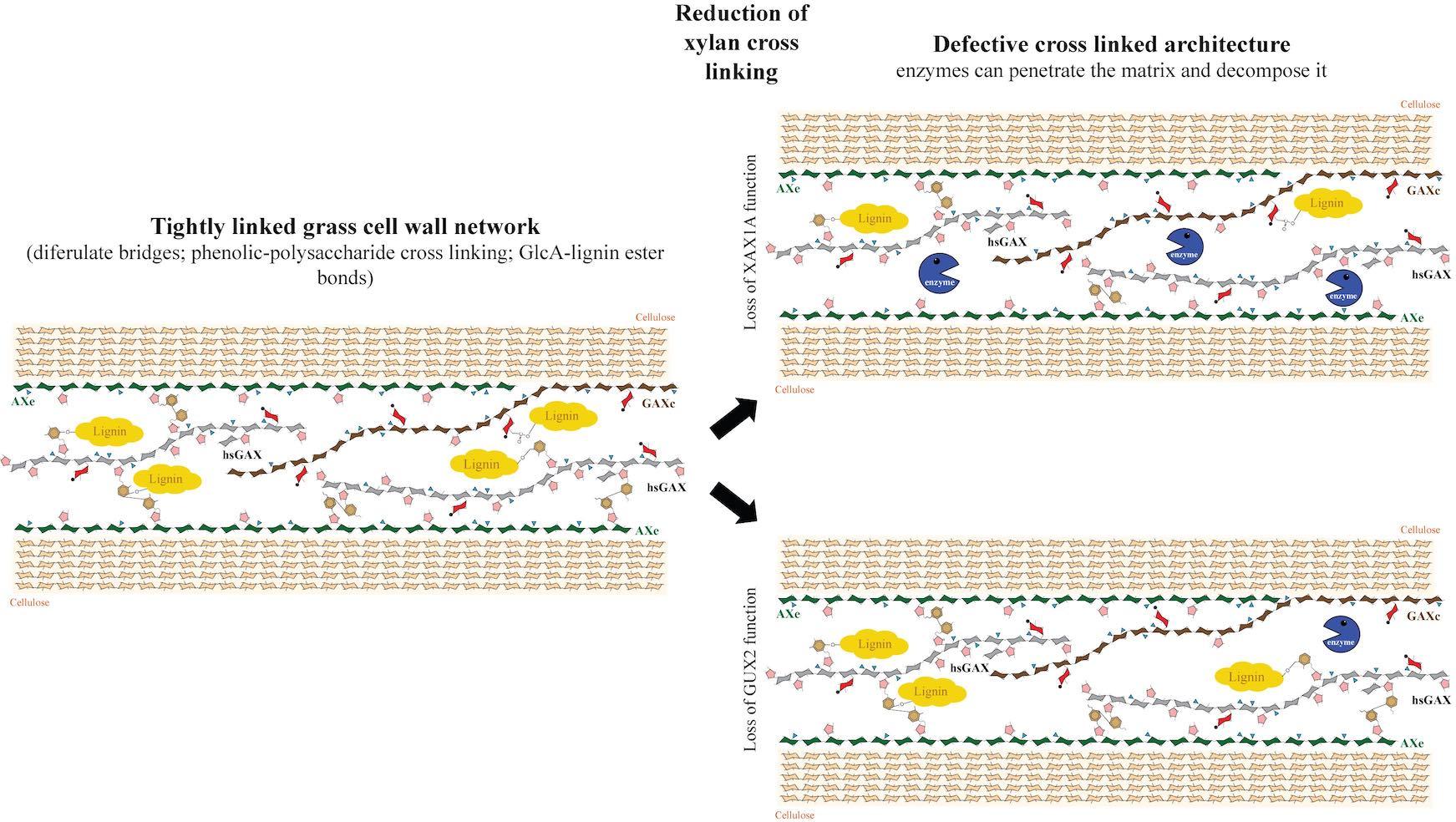
The grass family provides staple foods for billions of people worldwide, feed for animals, and biomass for the production of bioenergy. Plant biomass is primarily composed of lignin and polysaccharides that crosslink and interact with each other, forming complex and tightly knit cell walls. These networks of wall components cause cell walls to be resistant to degradation, which diminishes the nutritional value of grasses for animals and the cost of biofuel production, but these properties could be beneficial for human gut health by influencing dietary fibre properties.
Dr Theodora Tryfona (Dupree group) and coauthors hypothesised that the side chains of the polysaccharide xylan – a major component of grass cell walls – is significantly affecting cell wall properties. The authors engineered the model grass Brachypodium distachyon by reducing xylan side chains and found that this led to a less tightly bound cell wall. A more loose cell wall polymer network allows easier penetration of digestive enzymes that break down biomass. The findings published in New Phytologist, provide a better understanding of the molecular architecture of grass cell walls and open new avenues to improve cereals for food and to use grass biomass for animal feed, the production of bioenergy and biomaterials.
